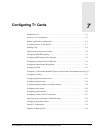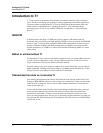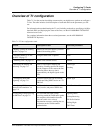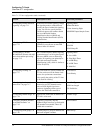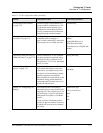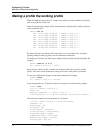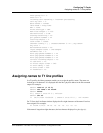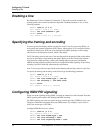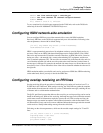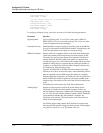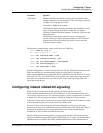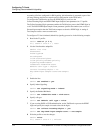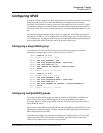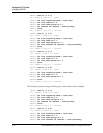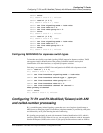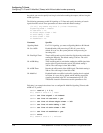
Configuring T1 Cards
Configuring ISDN network-side emulation
APX 8000/MAX TNT/DSLTNT Physical Interface Configuration Guide Preliminary May 9, 2000 7-9
admin> set line switch-type = switchtype
admin> set line channel 24 channel-usage=d-channel
admin> write
T1/{ shelf-1 slot-2 1} written
To see a complete list of switch types supported on the TAOS unit, refer to the TAOS unit
online help or the APX 8000/MAX TNT/DSLTNT Reference.
Configuring ISDN network-side emulation
You can configure PRI lines to use either network-side or user-side ISDN emulation.
Previously, PRI lines on the TAOS unit supported only user-side emulation. Following is the
relevant parameter, shown with its default setting:
[in T1/{ any-shelf any-slot0 }:line-interface]
isdn-emulation-side = te
ISDN is a nonsymmetrical protocol used by telephone carriers to provide digital services to
end users. There are no ISDN links between telephone carrier Central Offices (COs). ISDN
links exist only between the CO and the customer. Therefore, an ISDN link can be viewed as
having two sides— the network side, or network terminating (NT) equipment, and the user
side, or terminal equipment (TE). The user side can connect only to the network side, and vice
versa. Both the network side and the user side perform the same functions, but the format of
the messages is different. For example, the network side must always set a bit and the user side
must always clear it. These differences allow either side to determine whether the other end is
the right one.
ISDN emulation enables you to build, send, receive, and process ISDN data. ISDN monitoring,
on the other hand, allows you only to decode the ISDN data.
Configuring overlap receiving on PRI lines
Overlap receiving affects the procedure of establishing an incoming call received on a T1 or
E1 PRI line in the TAOS unit. With overlap receiving, the TAOS unit can gather the complete
called number from the network switch via a series of Information messages, enabling the use
of features such as called-number authentication.
The Q.931 specification states that either en-bloc receiving or overlap receiving can be used to
handle an incoming call. With en-bloc receiving, the Setup message received from the network
switch must contain all information required to process the call. With overlap receiving, the
Setup message can contain incomplete called number information, with the remainder of the
call information (if any) sent in one or more additional Information messages after the network
switch receives a Setup Acknowledge message from the called unit.
Following are the relevant parameters, which are shown with sample settings for T1 and E1
lines:
[in T1/{ shelf-1 slot-5 1 }:line-interface]
signaling-mode = isdn-nfas
overlap-receiving = yes
pri-prefix-number = 3069



